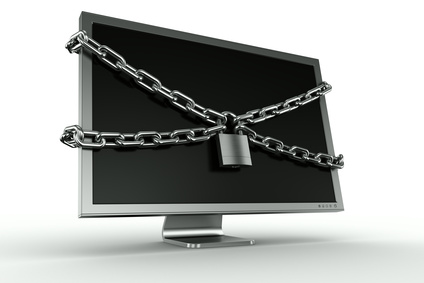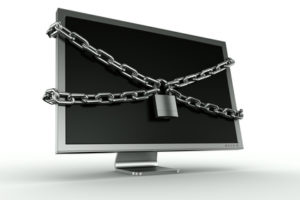The Office of Inspector General (OIG) released a new report titled, “CMS Should Use Targeted Tactics to Curb Questionable and Inappropriate Payments for Chiropractic Services.”
 According to the Centers for Medicare & Medicaid Services (CMS) Comprehensive Error Rate Testing program, Chiropractic services have the highest rate of improper payments among Part B services.
According to the Centers for Medicare & Medicaid Services (CMS) Comprehensive Error Rate Testing program, Chiropractic services have the highest rate of improper payments among Part B services.
Past OIG investigations found that between 40 and 47 percent of all paid chiropractic claims were for maintenance therapy and stated that, “Medicare paid out over $76 million for chiropractic services that were questionable.”
In addition, Medicare fraud cases suggested that vulnerabilities existed with other chiropractic services, such as physical therapy.
The OIG analyzed paid claims for chiropractic services to identify any chiropractors who exhibited questionable billing. Using the data, the OIG uncovered 809,945 claims resulting in overpayments. In addition, The OIG identified over twenty-five thousand chiropractors who received high amounts of questionable payments and then determined their locations, past questionable payments and whether their patients received same-day physical and occupational therapy.
Important to doctors of chiropractic is that the report outlined plans on how to determine questionable chiropractic claims and recoup payments using different measures.
The first area to be targeted is treatment that is suggestive of maintenance therapy. Using 20 services per beneficiary per year as a threshold, the OIG looks at all claims in excess of the threshold to be questionable and suggestive of maintenance therapy.
Even though there are legitimate reasons for a Medicare patient to need treatment more than 20 times per year, you need to be able to justify your reasoning and have good documentation that supports it.
Additionally, a common issue for chiropractors is that they forget to change the date in box 14 when a Medicare patient comes back to the office for a new injury or exacerbation of a chronic condition. Forgetting to change the date in box 14 makes Medicare think that you are continuing to treat the patient from the date of the original condition and not for a new condition.
Just know that if you regularly see Medicare patients more than 20 times in a year, you risk being reviewed by the Department of Health and Human Services.
The second target is to identify chiropractors with high, questionable payments for upcoding claims.
Statistically only 10-15 percent of all paid chiropractic services are for the five-area adjustment code, 98942. As a result, the OIG set a threshold to identify doctors who billed out higher percentages of their claims using the 98942 code.
In the third measure, the OIG developed three ways to identify paid claims that did not meet Medicare requirements for payment:
- Submitted claims that, “Lack a Medicare Covered Primary Diagnosis. These claims lacked a primary diagnosis code that was covered by Medicare based on CMS guidance and the local coverage determination where the chiropractic service was provided.” In the report, almost 39 percent of chiropractors were identified as having filed at least one claim without a correct primary diagnosis. This amounted to a total of $20,709,516.00 in paid claims without the correct primary diagnosis. This means that Medicare requires an M99 subluxation or segmental dysfunction diagnosis as primary or the first coded diagnosis, except in Florida, the Virgin Islands and Puerto Rico. The local coverage determination for your state determines the M99 ICD-10 code you need to use as your primary diagnosis (ie subluxation or segmental dysfunction).
- Claims for Duplicate Services, meaning services provided on the same day for a patient with the same diagnosis and procedure codes by the same chiropractor.
- Claims Lacking the AT Modifier. “The AT modifier indicates active treatment is being provided and is a requirement for payment.”
Medicare only pays for chiropractic services to improve function (active treatment) but does not cover “maintenance therapy,” which is when further clinical improvement cannot be expected from ongoing treatment.
The next measure is an unlikely number of services per day on which paid chiropractic services totaled 16 hours or more. The threshold here is billing an average of 65 chiropractic services per day.
The OIG stated that, “This raises questions regarding the quality of patient care and, perhaps, whether these services were even rendered by the chiropractor.”
Lastly, according to experts in chiropractic practice and fraud detection, is the potential sharing of Medicare beneficiaries with claims from multiple chiropractors, which indicates potential kickback arrangements or medical identity theft.
The OIG stated, “We considered all of their payments for the beneficiaries seen by other chiropractors to be questionable.”
OIG Recommendations:
As a result of the study, the OIG made the following recommendations to the Centers for Medicare and Medicaid Services:
- Establish a more reliable control for identifying Active Treatment
- Develop and use measures to identify questionable payments for chiropractic services.
- Collect overpayments based on inappropriately paid claims.
- Ensure that claims are paid only for Medicare-covered diagnoses.
- Take appropriate action on chiropractors with questionable payments.
In a separate memorandum the OIG said, “we will provide CMS with information on chiropractors with high questionable payments, so that it may take action. CMS and/or its contractors should review their claims and take appropriate action.
Such actions could include:
- Recouping inappropriate payments.
- Educating providers on proper billing.
- Making referrals to law enforcement.
- Imposing payment suspensions.
- Revoking billing privileges.
- Taking no action, if the payment is determined to be appropriate.
- “Collect overpayments based on inappropriately paid claims. CMS should collect the $20.7 million in payments that resulted from the inappropriate claims we identified.”
So what does this mean to you as a chiropractic physician?
It should tell you that Medicare is stepping up its investigations and is continuing to develop the means to analyze your claims. Because of this increased scrutiny, chiropractic claims are going to be reviewed in more detail.
So don’t just sit back and hope the laws and regulations are going away; they’re not. It’s more important than ever for you to take advantage of everything Compliance & Auditing Services provides to its members.
If you’re not a member, the best advice I can give you is to take your head out of the sand. Thinking that it won’t effect you is no longer an option.
Review all of your documentation, coding and billing procedures to ensure you’re in compliance with all laws and regulations. Make sure you have a documented compliance program in place. If you’re too busy with running your office or feeling overwhelmed by all the laws and regulations, consider a compliance consultant that will develop, implement and help you maintain an office compliance program that will meet and exceed all government regulations.
![]() I’ve been getting a lot of questions about the -59 modifier and the new X modifiers, so I thought I would take some time here to explain the use of these modifiers and to let you know why most insurers, including Medicare, still continue to use the -59 modifier.
I’ve been getting a lot of questions about the -59 modifier and the new X modifiers, so I thought I would take some time here to explain the use of these modifiers and to let you know why most insurers, including Medicare, still continue to use the -59 modifier. Though it is likely that the -59 Modifier days are numbered, until then continue to code as usual, with modifier -59.
Though it is likely that the -59 Modifier days are numbered, until then continue to code as usual, with modifier -59.


 According to the Centers for Medicare & Medicaid Services (CMS) Comprehensive Error Rate Testing program, Chiropractic services have the highest rate of improper payments among Part B services.
According to the Centers for Medicare & Medicaid Services (CMS) Comprehensive Error Rate Testing program, Chiropractic services have the highest rate of improper payments among Part B services.

 For chiropractic physicians transitioning to ICD-10, most of the time they will be using chapter 13 (Diseases of the Musculoskeletal System and Connective Tissue.) For injuries however, they’re more likely to use chapter 19 (Injury, Poisoning & Other Certain Consequences of External Causes).
For chiropractic physicians transitioning to ICD-10, most of the time they will be using chapter 13 (Diseases of the Musculoskeletal System and Connective Tissue.) For injuries however, they’re more likely to use chapter 19 (Injury, Poisoning & Other Certain Consequences of External Causes).

 Passwords:
Passwords:
 Are you using computers that run on Windows XP in your office? If you are you may be violating HIPAA laws by doing so.
Are you using computers that run on Windows XP in your office? If you are you may be violating HIPAA laws by doing so.